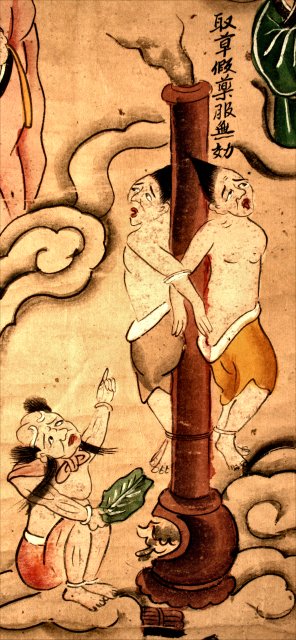
Translation
Took herbs and concocted false medicine pills that were ineffective
Further information
In his commentary to the "Sutra of the Past Vows of Earth Store Bodhisattva," the Tripitaka Master Hsüan Hua (1918-95) described the roasting hell where the dead embrace superheated brass pillars in terms of the whole philosophy behind hell's existence:
There are hundreds of thousands of ten thousands of hells, each one with its own attributes, each hell corresponding to an evil deed done by a living being. Hells are not prepared before beings fall into them; rather they are manifestations of the various particular karmas of beings. Whatever evil deed a being has done elicits a corresponding hell.For example, in the roasting hell there is a large hollow brass pillar full of fire. Those guilty of sexual misconduct fall into this hell and see the roasting pillar as a person. Men, for example, see it as a beautiful woman whom they rush to embrace, only to find themselves burned so badly that they cannot pull their seared flesh away from the pillar. A woman sees the pillar as her most beloved partner in life and rushes to him only to be seared to death.
As soon as death occurs in the roasting hell, a wind called the "Clever Breeze," a wonderful dharma, blows and revives the dead, who then forget the painful consequences of their behavior, recalling only its pleasurable aspects. Driven by this memory, they rush to the pillar again, only to find the cycle repeated. The roasting hell is only one of the many hells, and each one is unique.
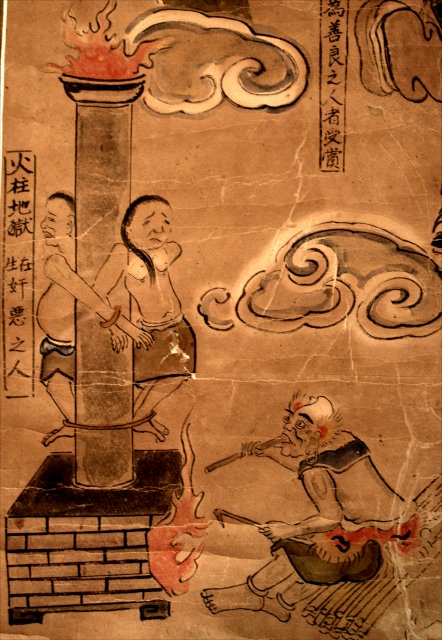
A second example of the superheated brass pillar from another hell scroll (C2).
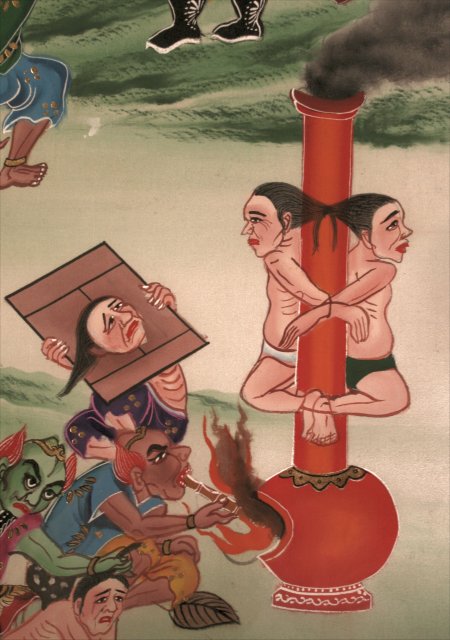
A third example of the superheated brass pillar from another hell scroll (E4).
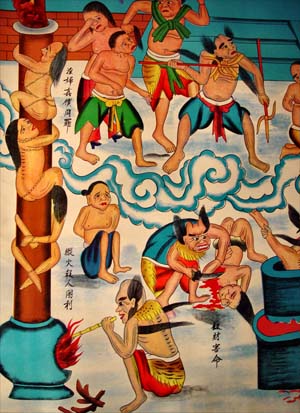
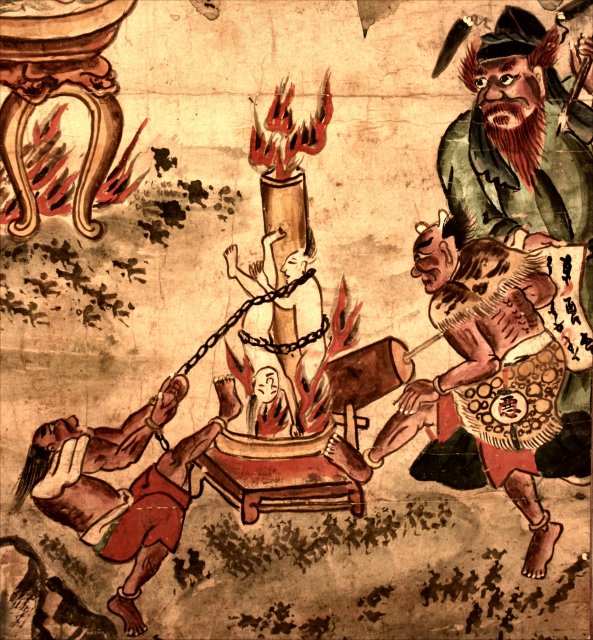

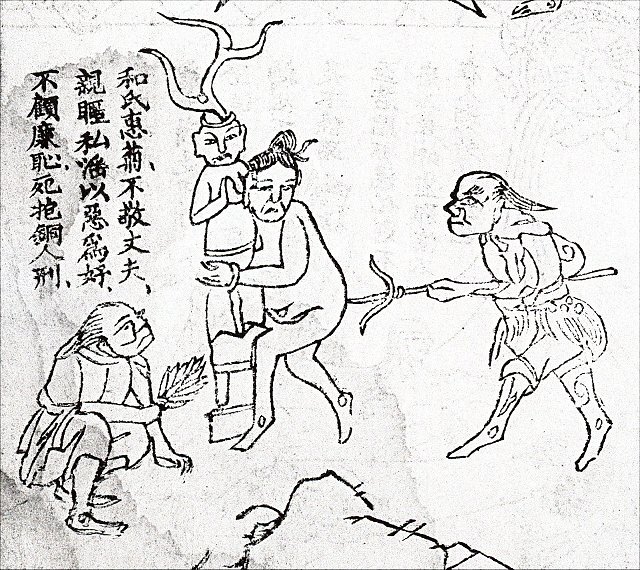
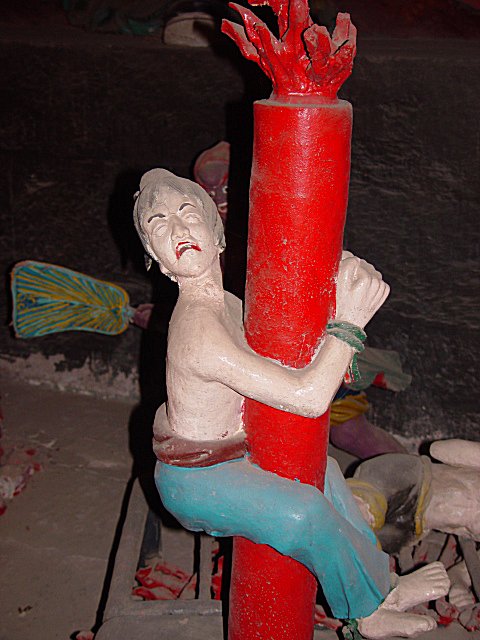
The superheated brass pillar as depicted at Fengdu, the City of Ghosts.